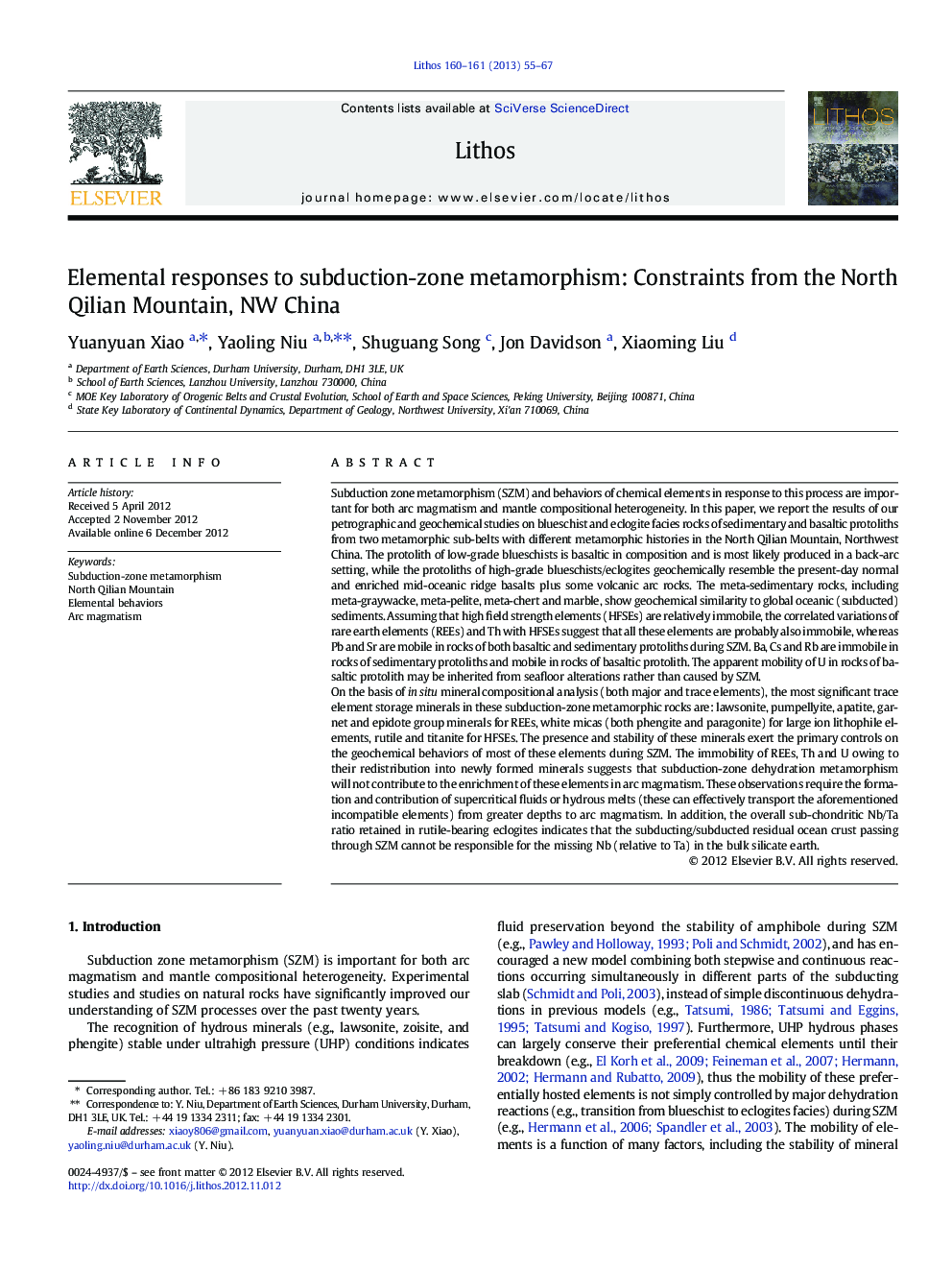| کد مقاله | کد نشریه | سال انتشار | مقاله انگلیسی | نسخه تمام متن |
|---|---|---|---|---|
| 4716325 | 1638696 | 2013 | 13 صفحه PDF | دانلود رایگان |

Subduction zone metamorphism (SZM) and behaviors of chemical elements in response to this process are important for both arc magmatism and mantle compositional heterogeneity. In this paper, we report the results of our petrographic and geochemical studies on blueschist and eclogite facies rocks of sedimentary and basaltic protoliths from two metamorphic sub-belts with different metamorphic histories in the North Qilian Mountain, Northwest China. The protolith of low-grade blueschists is basaltic in composition and is most likely produced in a back-arc setting, while the protoliths of high-grade blueschists/eclogites geochemically resemble the present-day normal and enriched mid-oceanic ridge basalts plus some volcanic arc rocks. The meta-sedimentary rocks, including meta-graywacke, meta-pelite, meta-chert and marble, show geochemical similarity to global oceanic (subducted) sediments. Assuming that high field strength elements (HFSEs) are relatively immobile, the correlated variations of rare earth elements (REEs) and Th with HFSEs suggest that all these elements are probably also immobile, whereas Pb and Sr are mobile in rocks of both basaltic and sedimentary protoliths during SZM. Ba, Cs and Rb are immobile in rocks of sedimentary protoliths and mobile in rocks of basaltic protolith. The apparent mobility of U in rocks of basaltic protolith may be inherited from seafloor alterations rather than caused by SZM.On the basis of in situ mineral compositional analysis (both major and trace elements), the most significant trace element storage minerals in these subduction-zone metamorphic rocks are: lawsonite, pumpellyite, apatite, garnet and epidote group minerals for REEs, white micas (both phengite and paragonite) for large ion lithophile elements, rutile and titanite for HFSEs. The presence and stability of these minerals exert the primary controls on the geochemical behaviors of most of these elements during SZM. The immobility of REEs, Th and U owing to their redistribution into newly formed minerals suggests that subduction-zone dehydration metamorphism will not contribute to the enrichment of these elements in arc magmatism. These observations require the formation and contribution of supercritical fluids or hydrous melts (these can effectively transport the aforementioned incompatible elements) from greater depths to arc magmatism. In addition, the overall sub-chondritic Nb/Ta ratio retained in rutile-bearing eclogites indicates that the subducting/subducted residual ocean crust passing through SZM cannot be responsible for the missing Nb (relative to Ta) in the bulk silicate earth.
► Analyzed bulk-rock and mineral compositions for subduction-zone metamorphic rocks
► Elemental responses to subduction-zone metamorphism are further proved
► Detailed analysis on rutile shows highly heterogeneous distribution of Nb–Ta.
► Further explained the role of subducted ocean crust for arc geochemical signatures
Journal: Lithos - Volumes 160–161, February 2013, Pages 55–67